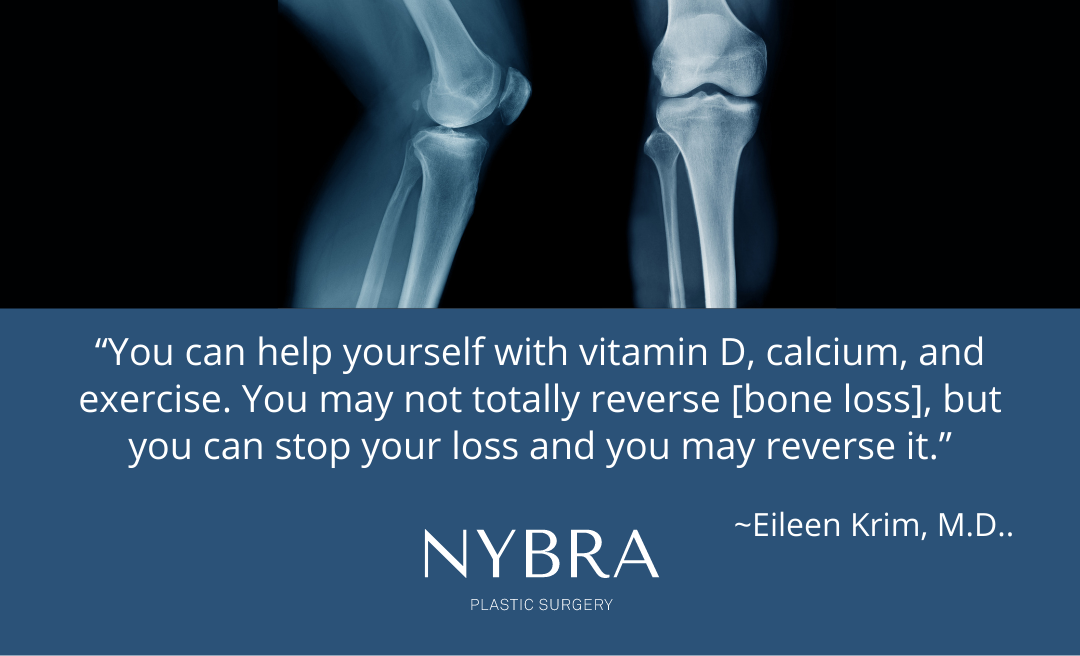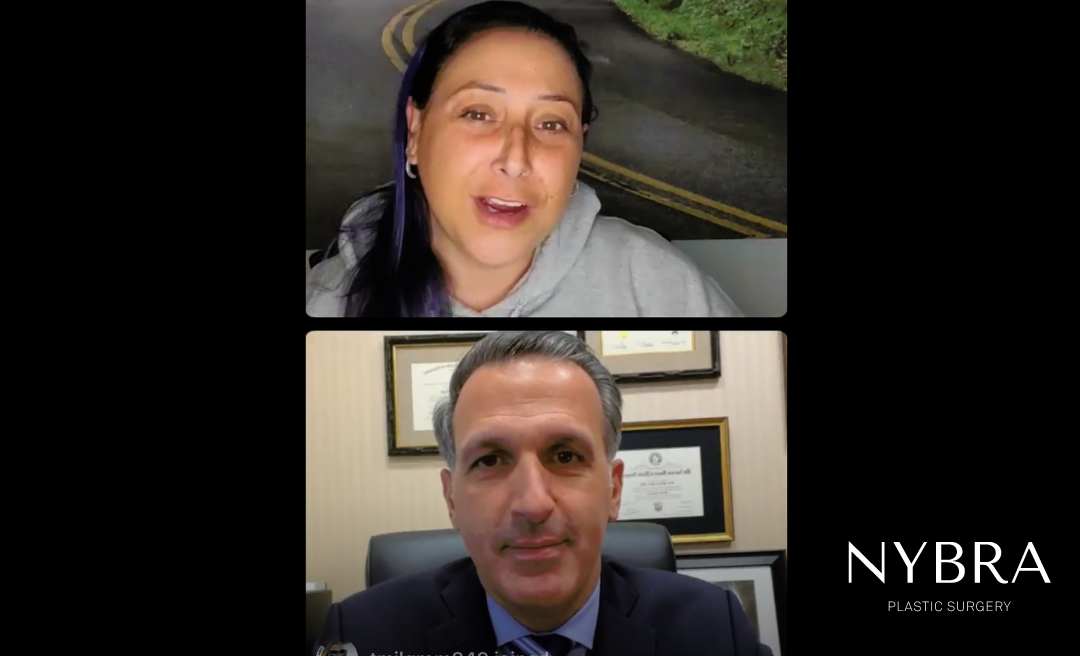Caring for the Bones That Hold You Up
February 5, 2022
“Bone is our skeleton. Bone is what’s holding us up and holding us together,” Dr. Eileen Krim said during a Be Informed Lecture on bone health.
Dr. Krim’s lecture provided a primer on bone health along with a hopeful message: there is no point of no return when it comes to caring for your bones. Even patients with osteopenia or osteoporosis and those who are menopausal and beyond can care for and improve their bone health.
“Once you have osteoporosis, it’s never too late. You can do weight bearing exercise, you can fix your diet. You must stop smoking. Decrease alcohol and do weight bearing exercise and medication. Osteoporosis can be reversed.”
Read on for a few highlights from the lecture, or check out the whole talk, here!
Osteoporosis is common.
Osteoporosis is reduced bone density and structure in the spongy interior portion of the bone, along with thinning in the cortical exterior of the bone. This condition affects about one in three women and one in four men.
Aging and menopause are key contributors to bone loss.
“As we age, our bones age with us, and we will build bone up until about age 30. From age 30 to 40 is when we have our peak bone mass.”
People begin to lose bone after age 40, even if they are not menopausal. Menopause generally constitutes a major bone loss, which then tapers off, and individuals gradually lose bone as they go on. Dr. Krim said women should check their bone density after a year without a period.
It is important to treat and monitor bone health—fractures can be life-altering.
“A hip fracture is a truly devastating event,” Dr. Krim explained.
The first year after a hip fracture can be debilitating. In that time, up to 60 percent of patients require assistance with activities of daily living, 50 percent will have another fracture, 40 percent are unable to walk independently, and 33 percent require live-in care. Even more sobering is the impact on survival.
“Twenty to 24% of people do pass away in the first year after a hip fracture. It’s deadly.”
You can take care of yourself by exercising.
As distressing as the health implications of a fracture may be, Dr. Krim stressed that it is relatively simple to monitor and care for your bones. Weight bearing exercise is a great way to build bone mass in your twenties and thirties and to maintain it as time goes on.
“Exercise is key. Not only does exercise protect against osteoporosis, but doing something like 40 minutes of walking three days a week protects against dementia. So, to me exercise is one of the most important things you can do for yourself as a favor.”
Vitamins and minerals can help prevent and treat bone loss, especially through food.
Vitamins and minerals like calcium and vitamin D play a key role in bone health. These essential compounds can be supplemented, however, supplementation comes with some risks and additional medical consideration. For example, calcium supplements can compromise cardiac health.
Dr. Krim said that eating well was more important and effective than taking a supplement.
“Taking a calcium supplement is not as good as eating healthy. You’re so much better off having a good diet than taking pills. It’s absorbed better and it works better in your body.”
In most cases, bone loss can be halted or even reversed.
While genetics do play a role in all areas of health, Dr. Krim stressed that lifestyle and medical interventions can improve bone health. Improved diet and exercise and discontinued smoking and alcohol use go a long way.
“You can help yourself with vitamin D, calcium, and exercise. You may not totally reverse [bone loss], but you can stop your loss and you may reverse it.”
Dr. David Light Answers Your Breast Reconstruction Questions with BRCAStrong
Dr. David Light joined BRCAStrong founder Tracy Posner for a community-driven Instagram live that focused on questions from individuals who joined the stream. The conversation…
